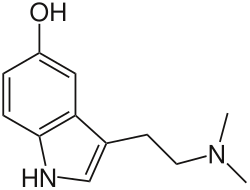Alkaloid

An alkaloid is a chemical compound that can be made naturally. They contain basic nitrogen atoms.[1] The name comes from the word alkaline and was used to describe any alkaline containing nitrogen. Alkaloids are made by a large variety of organisms, such as bacteria, fungi, plants, and animals and are part of the group of natural products (also called secondary metabolites). Many alkaloids can be purified from basic substances by acid-base extraction. Many alkaloids are toxic to other organisms. Some alkaloids have a bitter taste.
Well-known alkaloids
All of the following alkaloids are produced by flowering plants. They are one of the main ways plants reduce or avoid being eaten by herbivores.
- Cocaine, used as an anesthetic and a stimulant, is an illegal drug when it is not used medically.
- Caffeine, used as a stimulant, is used as something addictive in coffee or tea. In this case and the following, herbivores can eat the leaves but they get heart palpitations if they eat too many.
- Nicotine, used as a stimulant in cigarettes, can also be used to treat certain forms of epilepsy[verification needed].
- Morphine is made on large scales for using in treating severe pain. In a special slow-release form, it is sometimes used to help people get away from drug addiction.
- Quinine, used to treat certain forms of malaria, is sometimes used to give food a bitter taste.
- Curare, the poison dart substance, is originally a plant product from Strychnos toxifera, which is later concentrated in poison dart frogs.
- Strychnine and brucine are toxic alkaloids produced by Strychnos nux-vomica. This is a close relative of S. toxifera.
Alkaloid Media
The first individual alkaloid, morphine, was isolated in 1804 from the opium poppy (Papaver somniferum).
Friedrich Sertürner, the German chemist who first isolated morphine from opium.
Bufotenin, an alkaloid from some toads, contains an indole core, and is produced in living organisms from the amino acid tryptophan.
The nicotine molecule contains both pyridine (left) and pyrrolidine rings (right).
References
- ↑ International Union of Pure and Applied Chemistry (1995). "alkaloids". Compendium of Chemical Terminology Internet edition.










